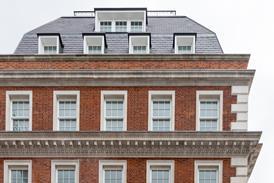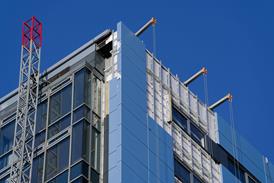Amec’s Continual Process Improvement Centre sets the standard for a whole host of m&e products. Tracy Edwards visits the testing facility’s nerve centre.
Where can you wander through heavily barred prison cells and explore dimly lit chambers crammed with menacing tools and cables, all under the watchful eyes of a malevolent robotic falcon?
No, this isn’t the set of the new Texas Chainsaw Massacre prequel. It’s Amec’s Continual Process Improvement (CPI) Centre in central London. The base tests a wide range of m&e products from the supply chain, adopting those which achieve the highest standards as best practice.
One of the items under scrutiny when EMC visits is a rather unconvincing plastic bird of prey. ‘Robop’ is a flapping, squawking device that is intended to scare away pigeons. The only problem is, when one hapless gardener sat monitoring the pigeon population with Robop in place, he found that their numbers had actually increased. After a while, however, the ruse seemed to be working. But then the testers found out why. There was a real falcon circling the garden – Robop had found a mate.
CPI often looks at changes in legislation for inspiration. The lack of showering facilities in prisoners’ cells has recently been challenged as a breach of human rights, so the workshop currently houses two mock cells, complete with showers. Controlling the water’s flow is one issue CPI is examining. Disconcertingly, all fixtures have to be designed in such a way that it is impossible to attach a ligature to them.
At the moment, the facility’s most popular innovation is a US import. It seems obvious, but how much quicker would it be to transport spools of cable on site if there was a simple device for rolling them that required no bending or exertion? The cable caddy is a simple idea, but wholly effective.
Selecting the correct product can have a huge effect on productivity and therefore installation costs. By using keyhole brackets instead of those with a round hole, for example, heavy electrical equipment can be fitted by one person as opposed to the usual two. This results in a saving of £800 per job.
It’s up to every individual and company to use this knowledge and process in their particular markets.
For CPI, there are four key considerations when assessing a product:
- productivity – products that are inherently faster to install;
- quality – a drive towards zero defect culture;
- safety – challenging whether certain traditional methods, such as hot work, are actually necessary;
- environmental concerns.
Though the department is a small one, consisting of just five employees, its approach is nothing if not thorough. “You’ve got to kiss a lot of frogs to find a princess,” laughs Ron. These days, though, it’s the princesses who are queuing up to kiss him. “The centre has been running now for two and a half years,” he says. “In the beginning we had to do a lot of phoning up companies to say, ‘Come on, show us innovations, show us what you’ve got,’ but now a lot of companies come and show us what they’re working on. We’re influencing products.”
One of the products recently put to the test in preparation for the Heathrow T5 project was cable tray. “We did an assessment of containment systems and the one that we favoured was Cablofil,” says Ron. “To join two pieces of traditional cable tray together takes 37 components. Cablofil uses two. They could have installed something like 160 000 lengths at T5. I think it works out at about three million components saved. That’s three million things that we don’t have to buy, join, take off, count, order, store. And you’d probably have to buy four, because that’s the kind of stuff that gets swept up or lost. ”
The continual improvement ethos means that Amec may well use the Snakeway product from Marshall Tufflex in the future. This is a hand bendable system that needs no components for joining.
Though he is understandably cagey about the prospect of inviting other contractors into the CPI facility, Ron is happy to share some of the inside knowledge with others in the industry. Amec’s main priority is business improvement, but this is not going to happen in isolation without technical buy-in from the client, so the company also recognises its role in raising industry standards as a whole. “For example, wherever we can, we use cold-jointed pipe, but the choice is not always ours, it can be the architect’s, the consultant’s, etcetera,” explains Ron.
The key to CPI’s success is its strategic use of practical presentations. This is not just some dusty, darkened lab. Road shows, site visits and on-site trials not only ensure that the facility has good data to analyse, but also allow end users to see for themselves how well the new innovations actually work. “You get a sort of peer pressure that gets the ball rolling and helps with implementation,” says Ron. “And it’s not just me, in a suit, saying you should use that tool. The guys are part of the process.”
Source
Electrical and Mechanical Contractor




















No comments yet